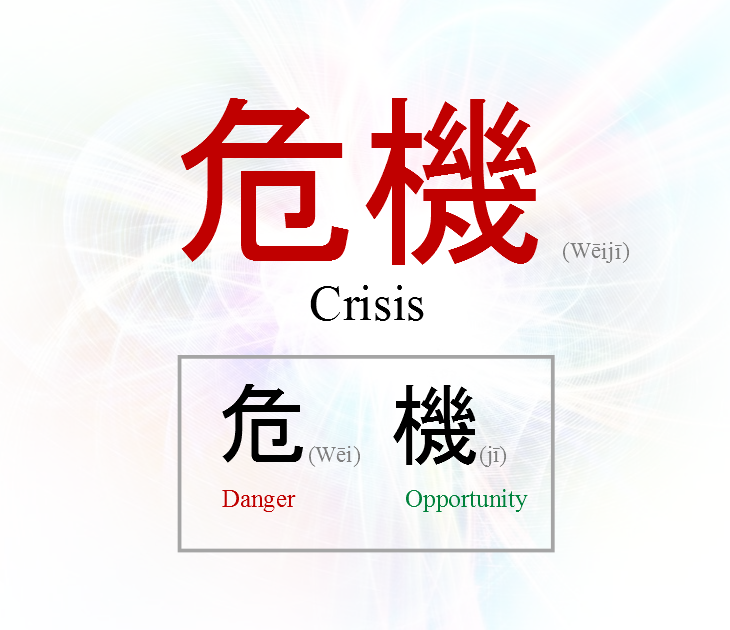Life Is Beautiful
Part XIII: Fearless Leadership[1],[2]
“The purpose of life is a life of purpose.”— Robert Byrne

James A. Cusumano, PhD; Chairman Chateau Mcely s.r.o. Prague, Czech Republic
I have been an entrepreneur most of my life, founding and leading the growth of publicly-traded companies. Although I’ve enjoyed success, I made some mistakes along the way—I eventually appeased my afflicted ego by calling them “learnings!” These learnings taught me a lot about business, most especially about people and therefore about life.
I discovered eight guidelines, which if followed diligently, essentially enable growth to a successful thriving enterprise.[3]
None of these guidelines is more critical than number three, which expressed in its complete form is hire the right people for the right job at the right time and when you make a mistake—and on occasion you will—quickly and compassionately make the necessary changes. This is so important because success in just about any undertaking is always about three things— people, people and people—from the managing director to maintenance personnel. They may not all be equal when it comes to position, salary and potential impact on the company, but every one of them is IMPORTANT and must function in the right frame of mind and motivation to do their job well.
If we take this analysis to the next level, there is an important aspect that permeates the leadership and management of every long-lasting success in business and that is Fearlessness. It is especially important as the business cycles through good times and challenging times, which all businesses do at one point or another. Perhaps a personal story will help clarify this point.
As my colleagues and I were building Catalytica Pharmaceuticals from five people and a novel concept to the largest contract-manufacturing pharmaceutical company in North America, namely, more than 2,000 people with annual sales of $500 million, we encountered some of those tough times. Early on, as CEO, I made cetain key mistakes, which eventually became helpful learnings.
An important one of these learnings was how to properly handle business cycles. When times were good and we were meeting or exceeding our budget and goals, I must admit that I very much enjoyed my sense of accomplishment and the compliments that our management team and I received from our board of directors. But, in challenging times, when we were unable to achieve our goals and projections, I didn’t easily appreciate the input of some board members, probably because their constructive criticisms were right on target—but they hurt! I tended to blame our problems on the economy, or on other external factors. How could it possibly be due to the management team, right?
What did I do during those tough times? Unfortunately, even though I had worked diligently and creatively with our team to hire excellent people—people who certainly were much more experienced and capable than I in their area of expertise, e.g., finance, sales, marketing, manufacturing and technology, as we entered these challenges, I began to expose the management team to my fears and concerns. I often didn’t ask for their input concerning this or that potential solution to our problems, but strongly suggested my own ideas—even when I knew the team thought my suggested course of action would be ineffective and a waste of time.
In a moment of personal truth, I knew things were not right. Something was wrong with the way I was looking at our challenges and the way I was behaving. Later, I would find out that I was operating out of fear and with little or no consideration for the expertise, experience and feelings of the talented people we had hired as members of our team.
There was a possible solution. Living in Silicon Valley, I had access to numerous proven counselors in the areas critical to building a successful business. A good friend introduced me to one of them—Dr. Dorothy Jongeward. Dorothy was a world-class psychologist in the field of Transactional Analysis (TA), which teaches how to alter your ego and control your fears as a way of solving personal and professional issues. She had written many books on the subject, one of them, Born to Win, had sold more than four million copies [see Figure 1].
The first time I met Dorothy, I really like her. She was unpretentious, a great listener and showed an earnest concern to help me. During our discussion of business cycles, she advised me to think about the Chinese philosophy concerning the word “crisis.” The Chinese write “crisis” with two characters. The first one means danger, but the second means opportunity. In other words, in every crisis there is always an opportunity [see Figure 2].
In our first meeting she asked me several important questions.
- What is your mission?
- Are you still excited by and committed to your mission?
- What are your personal and company values?
- Are you still earnestly committed to these values?
- Do you spend quality time on the important things that need to be done in your role as CEO to be successful, or are you distracted by other things, which may not be relevant to your mission—especially during challenging times?
She was pleased to hear my affirmative answer to each of these questions.
She then told me that the best metric to determine if a company or any group of people is functioning well is if trust permeates the organization. This certainly made good sense to me.
She said that her sense was that Catalytica Pharmaceuticals had a very high level of trust in its corporate fabric. She ended with a simple straight forward comment. “Don’t screw it up with the propagation of useless and damaging fear!” I was taken aback. But as my ego recovered and I thought about her wakeup comment, I knew she was right.
Dorothy’s point was if you hire the right people at the right time to do the right job, then you must trust that they are doing just that. Yes, you can ask the team questions and make suggestions, but if these managers are more experienced and more highly trained in areas that are not your primary expertise, it would be ineffective to tell them what to do—worse, it could be demoralizing to them. Done too often, a smart and effective executive would soon find a different professional opportunity.
“Your primary job, Jim, as CEO,” she said, “Is to set a strategic direction, agree with the team on goals and priorities, check back occasionally to be sure things are on target and then—get out of their way!”
The complete opposite of this is what happens when the leader jumps into the fear mode of operation. He or she usually has sleepless nights because the organization is not performing well. What will the board think? Out of fear and thinking it will help, a fearful leader often gives direct orders to his or her immediate reports. Try this or try that! We’ve got to turn this thing around! In this case the outcome will only be as good as the leader is in a state of fear, and forego the benefits of the talented people hired into the organization.
Philosophers and psychologists figured out long ago, you always attract what you fear, and that which you fear most comes swiftly to your doorstep. The reason that you fail when you are overrun with fear is the same reason you succeed when you put your focused “fearless” attention and intention on a desired positive outcome. It’s the other side of the coin. Fear induces all of the physical, emotional and psychological feelings necessary to create a negative outcome. Fear is a powerful paralyzing force.
This is why the leader must learn to manage fear and in the best case be absolutely fearless [See Figure 3]. It’s not easy. It requires practice, but it absolutely can be achieved. Not only is it important to be fearless in the presence of executives, managers and other employees but, it is equally necessary to demonstrate compassionate understanding for their fears. A fearless leader helps them see past their challenges, so that the entire team can operate like a well-oiled machine. Otherwise, the company will be in the typical “fight-or-flight” mode, which is fine if you’re being chased by a bear.
In fight-or-flight operation, there is essentially zero creativity for solving challenging problems. “Fight-or-flight” stress works well in military operations—Keep your head down, or it will be blown off!—but not in business. When your body experiences fight-or-flight, the Immunoglobulin (IgA) antibody levels in your body go down and your cortisol hormone levels go up. This is perfect physiological chemistry for creating illness. In fact, the medical profession is moving increasingly towards the conclusion that nearly all illnesses, from colds to cancer, are caused in this way, namely by frequent stressful fear reactions.
It’s not easy to become fearless, but it can be done and the results are well worth the effort. However, we human beings have a great capacity to exaggerate the negativity and potential outcome of a challenge. This is due to prior conditioning by others and to remnants in our ancestral “animal brain.”
Two things can help overcome these two impediments—moderate physical exercise and meditation. The practice of both is best. Frequent exercise and meditation—just 20 minutes per day—have demonstrated that IgA levels increase and cortisol levels decrease leading to better health and increased longevity. Under these circumstances, the parasympathetic nervous system has been found to bring about radical healing of even the most recalcitrant diseases.[4] Life is truly beautiful.
Sat, Chit, Ananda!
Enjoy your journey, make a difference!

[1] EDITOR’S COMMENT— This is the thirteenth article in a series based on the author’s book, “Life Is Beautiful: 12 Universal Rules,”Waterfront Press, Cardiff California, 2015.
[2] The author may be reached at Jim@ChateauMcely.Com.
[3] James A. Cusumano, BALANCE: The Business-Life Connection, SelectBooks, New York, 2013.”
[4] There is an excellent award-winning documentary that can be seen on Netflix. Entitled “Heal,” it shows interviews with a number of world experts on the power of the mind—more accurately, consciousness—to bring about radical recovery from disease.

Figure 1: Dorothy Jongeward “wrote the book” on how to create successful transactions among people. She developed the field of Transactional Analysis and presented the details in an easy-to-read international bestseller entitled Born To Win.

Figure 2: Chinese philosophy states that there is an opportunity in every crisis. Of the two characters that mean “crisis,” one means “danger” and the other means “opportunity.”

Figure 3: You attract what your fear, and that which you fear most, comes swiftly to your doorstep. The same mechanism is at play as when you manifest something positive by putting your Attention and Intention on a desired outcome.

